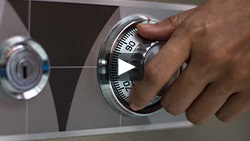During the COVID-19 pandemic, opportunities for mental health professionals to connect with clients in person are limited. Yet the emotional impact of the pandemic—social isolation, financial concerns, anxiety, loss—place many people at increased risk for suicide.
In the short videos that follow, Dr. Barbara Stanley, professor of medical psychology at Columbia University and director of the Suicide Prevention – Training, Implementation, and Evaluation Program at the New York State Psychiatric Institute, provides concrete tips for making sure clients stay safe without having to rely on hospitalization.
These videos were adapted from the SPRC webinar Treating Suicidal Patients During COVID-19: Best Practices and Telehealth.

Initiating and Maintaining Remote Contact
Hear recommendations for initiating and maintaining remote contact with clients who may be at risk for suicide, with an emphasis on gathering specific information to access the client and their supports in the event of an emergency, preparing for technology interruptions, and best practices to include at every visit.
Developing a Safety Plan Remotely
Listen to guidance on developing a safety plan remotely, highlighting how the process is the same—and different—from safety planning in person.
Additional Resources
- COVID-19: Adult Suicide Risk Screening Pathway and COVID-19: Youth Suicide Risk Screening Pathway – Use these suicide risk screening pathways from the National Institute of Mental Health’s Ask Suicide-Screening Questions (ASQ) Toolkit during telehealth screenings (e.g., phone, video).
- Patient Safety Plan Template – Use this fill-in-the-blank template to develop a safety plan with a patient who is at increased risk for a suicide attempt.





















